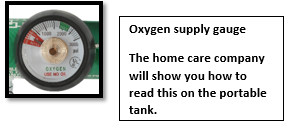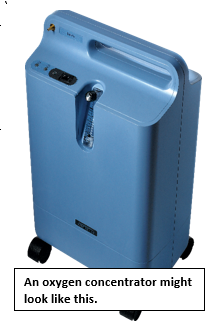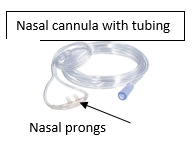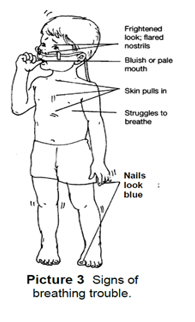Oxygen Therapy at Home
Oxygen Therapy at Home
Your child needs to use oxygen at home. A home care company will get you the equipment and supplies needed. The supplies for home may be different from what is being used in the hospital. It is important to follow the home care company’s directions.
Use these tips to keep your child safe.
General information
The home care company will:
- provide oxygen equipment and supplies
- bring the portable oxygen tank to your child’s hospital room bedside and show you how to set up the oxygen
- show you how to use it at home and when you travel
- show you how to read the gauge - the gauge shows you how much oxygen is left in the tank
- tell you how often to change the nasal cannula
The home care company may bring the concentrator to the hospital or to your home.
Things to check every day:
- The oxygen gauge
- The nasal cannula tubing
Check the oxygen supply gauge every day. Always call your home care company at least 24 hours before you think you will run out of oxygen. You will find the number for the home care company on your equipment.
Equipment:
A nasal cannula is used to give your child oxygen at home.
- Do not make changes to the nasal cannula in any way. If you cut the ends, they will not be safe.
- The nasal cannula prongs are slightly curved. Make sure the prongs curves down into the nose.
- If needed, you may tape the tubing on the face with silk tape or Tegaderm™
Oxygen Safety
- Do not smoke around the oxygen ever. It can start a fire.
- Do not use electrical devices, like electric toys or electric blankets. This could cause sparks and start a fire.
- Keep the oxygen at least 5 feet from any heat source like a radiator or fireplace.
- Do not leave portable oxygen tanks in a hot car.
- Do not use oil-based products like Vaseline™ on your child. They can start a fire. Use water-based lotions instead.
- If using oxygen tanks, store them in an approved cart or lying flat in an open area.
- If using liquid oxygen, keep the oxygen tank upright. Do not touch any frosted parts.
When to call the doctor
If your child has trouble breathing:
- Check the oxygen tank - if the tank is empty, connect to the home concentrator if you can or switch tanks; or call the home agency for new tanks.
- Check the nasal cannula. Make sure it is in the nose and the tubing is connected to the tank.
- If the oxygen is working and connected and your child still has trouble breathing, call your child’s doctor right away
If your child has signs of breathing trouble (see drawing), it can mean that they are not getting enough oxygen.
How my child looks with trouble breathing:
For more information:
Visit the American Lung Association for more information about using oxygen at home:
https://www.lung.org/lung-health-diseases/lung-procedures-and-tests/oxygen-therapy/using-oxygen-at-home







